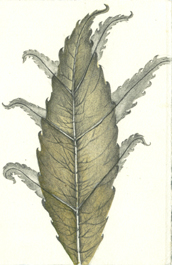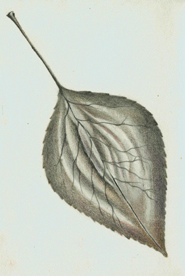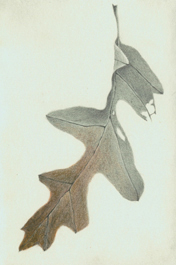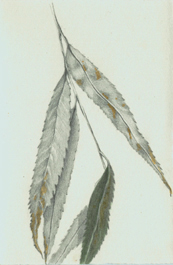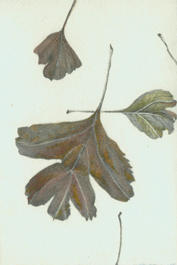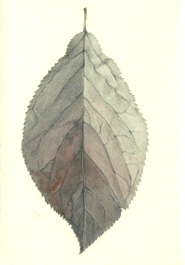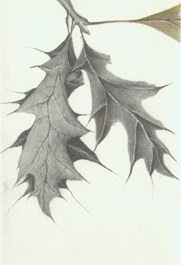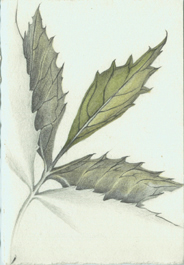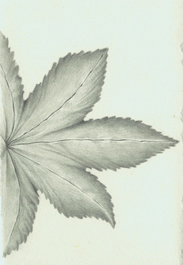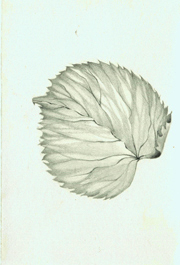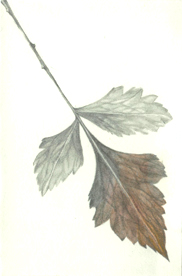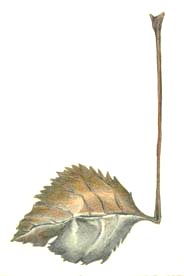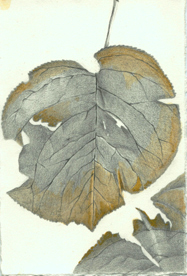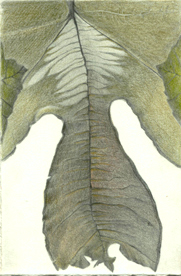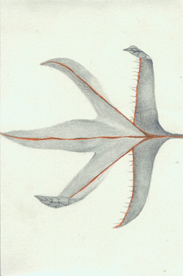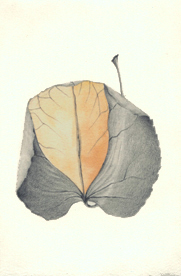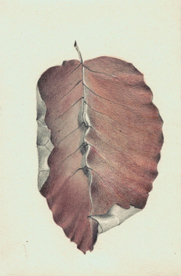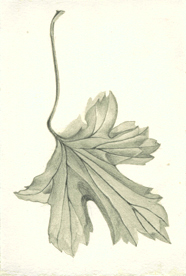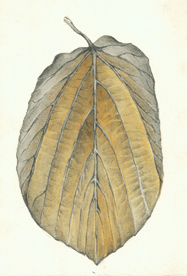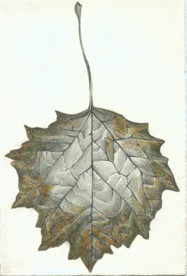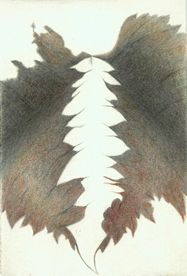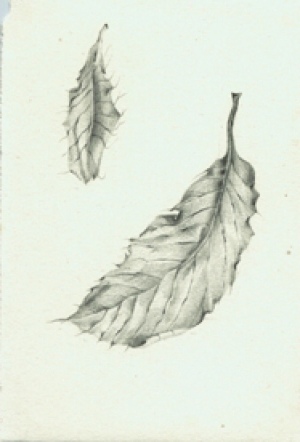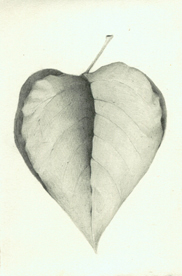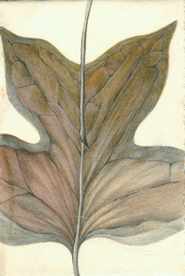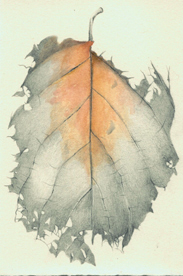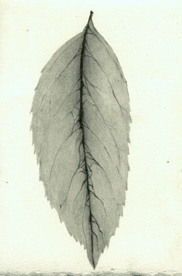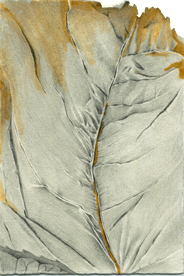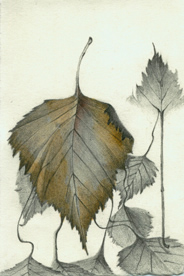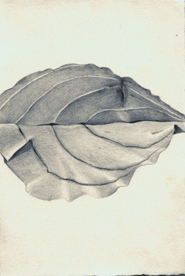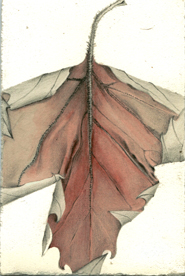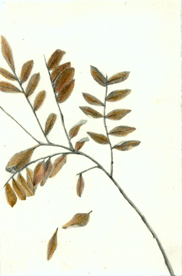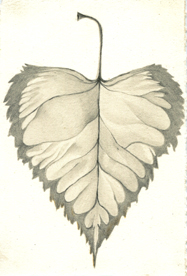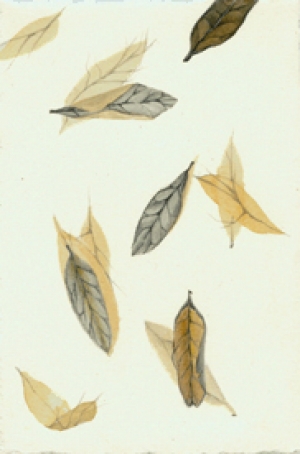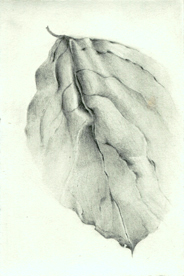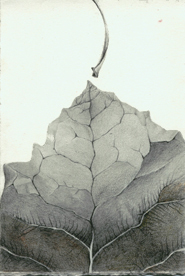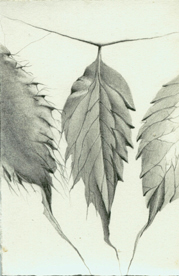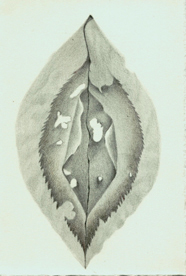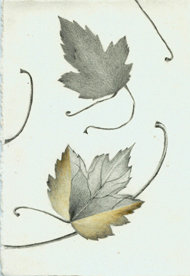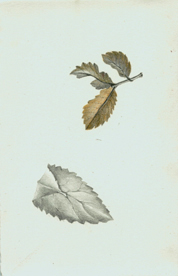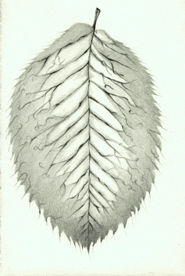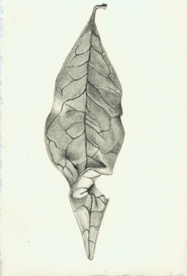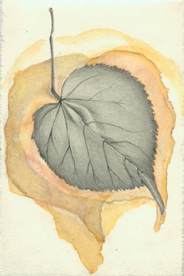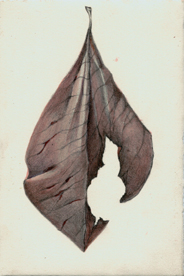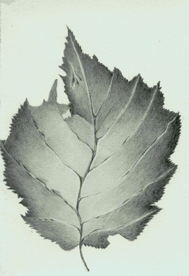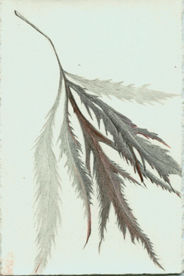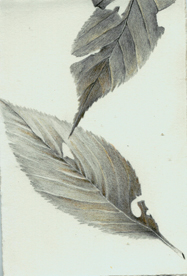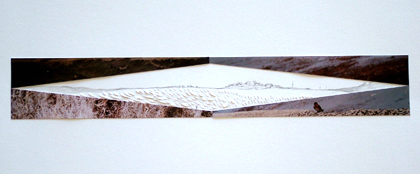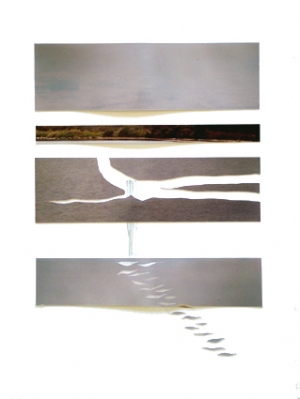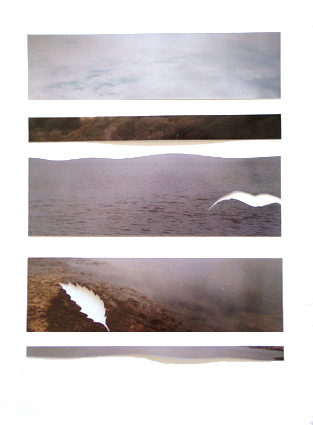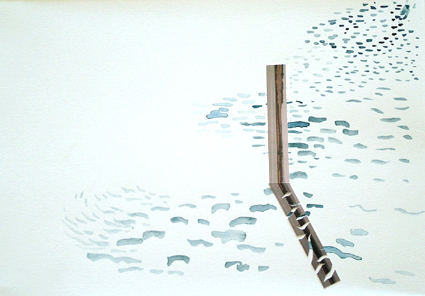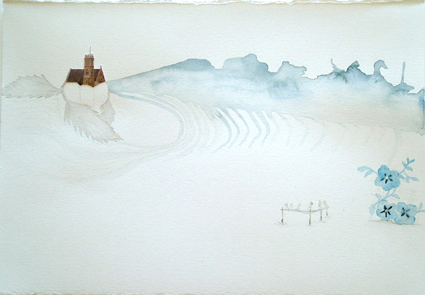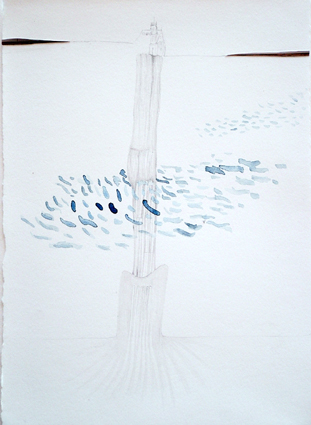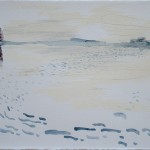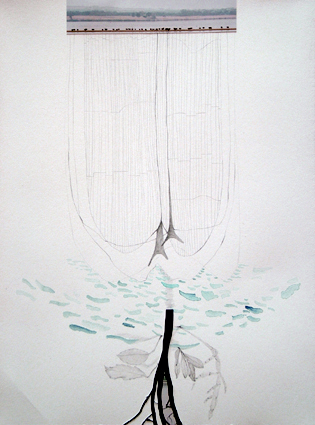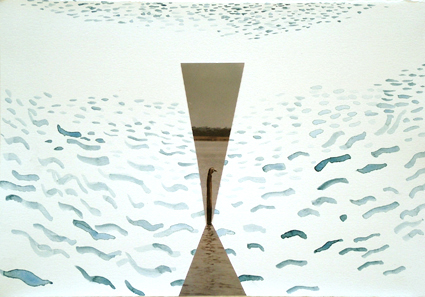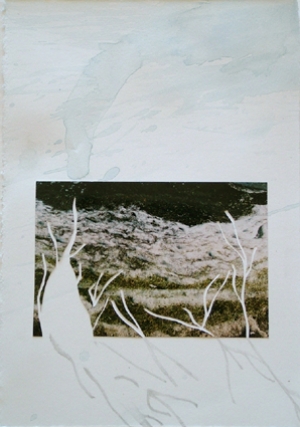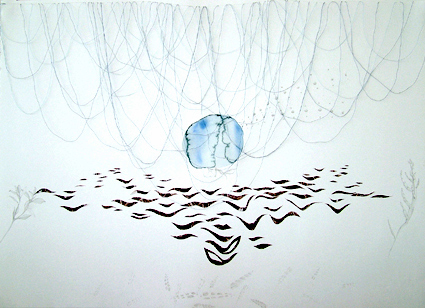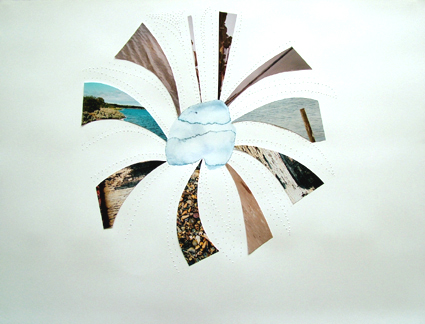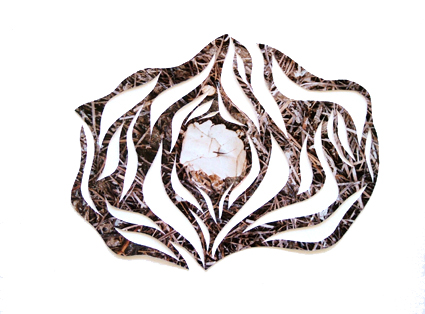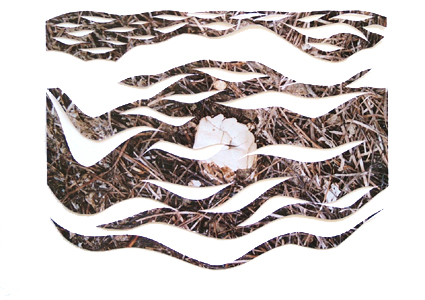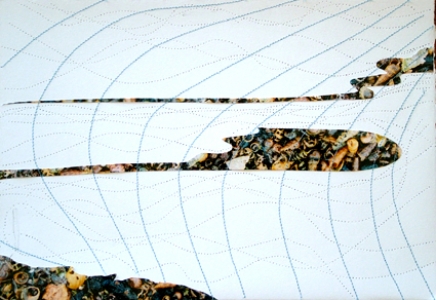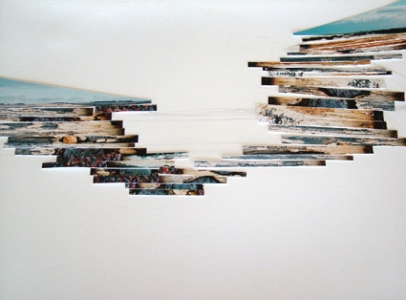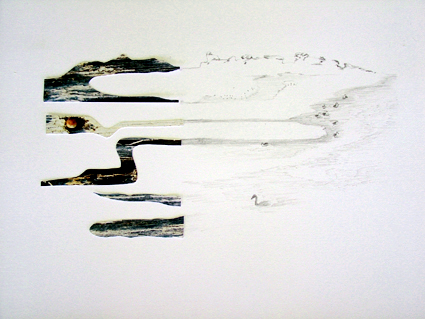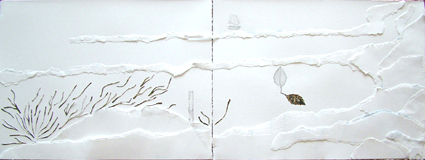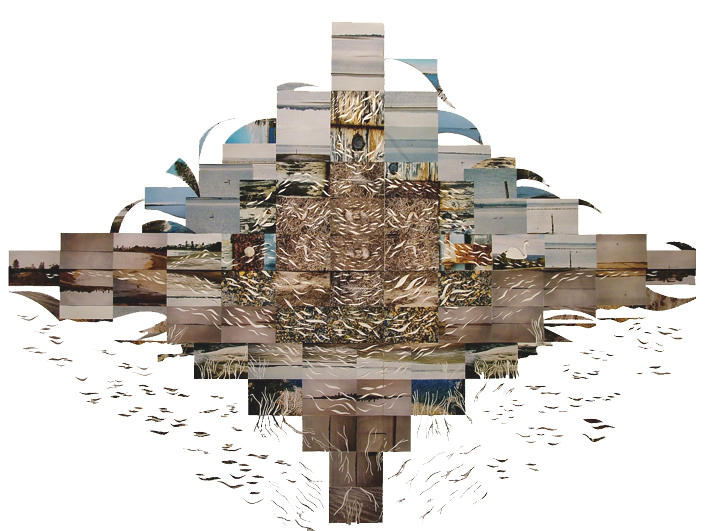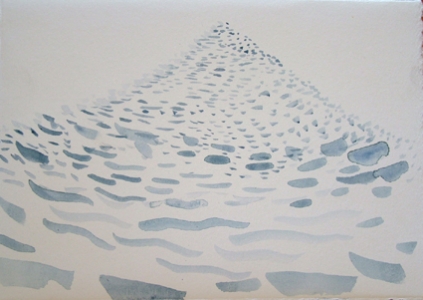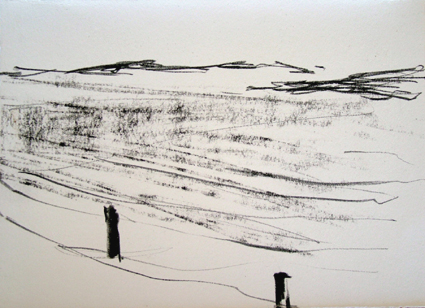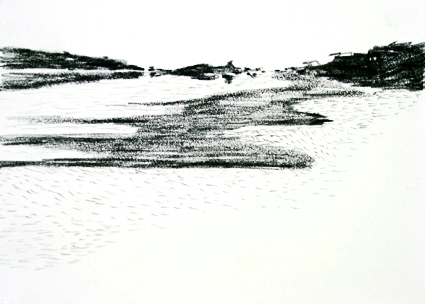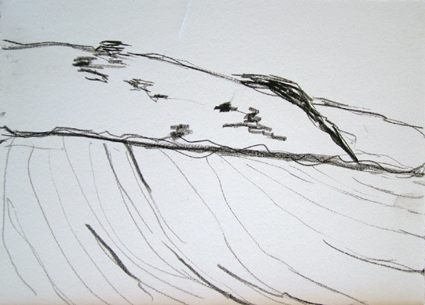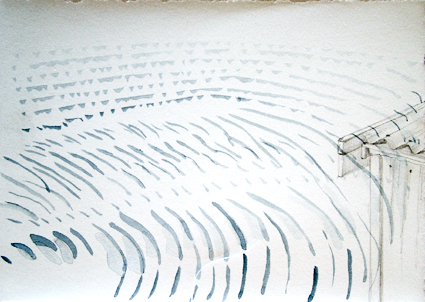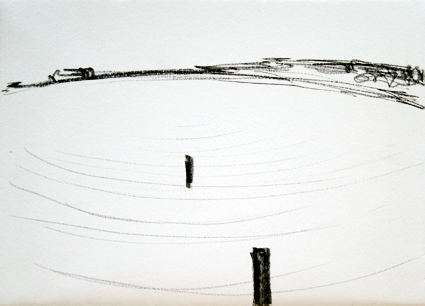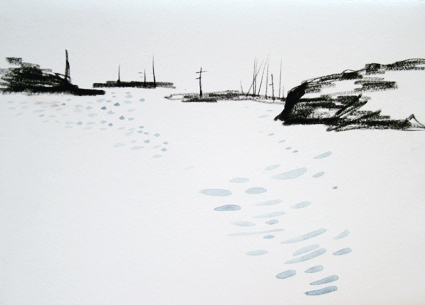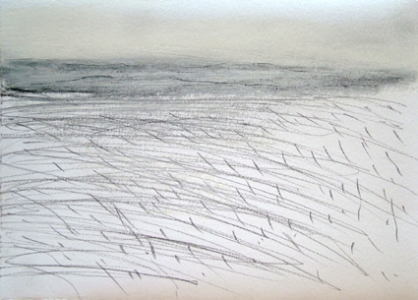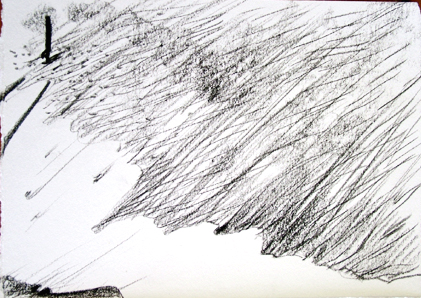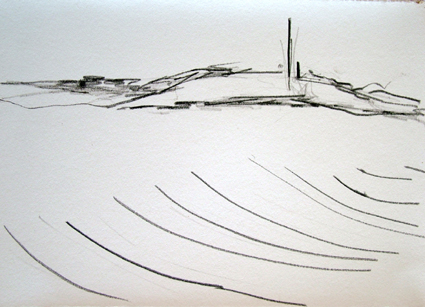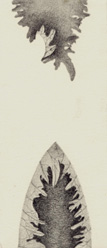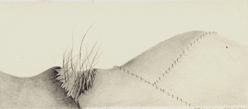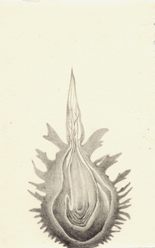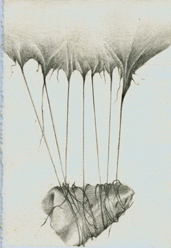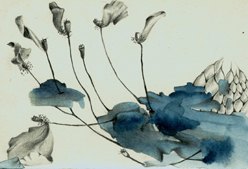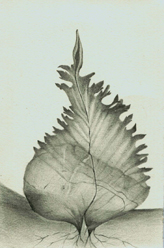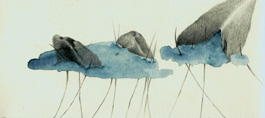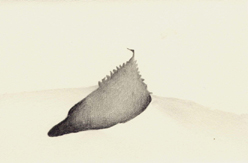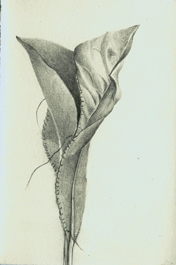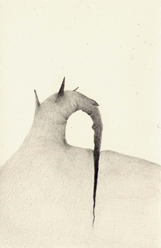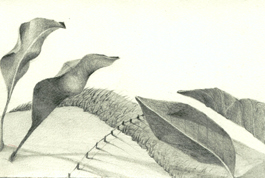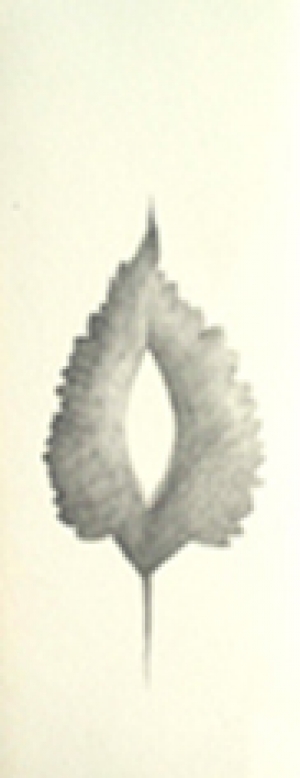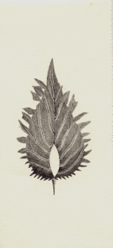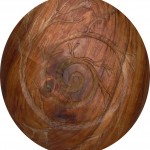
The Breast
Drawings and Sculptures
Inspired by the experience and challenges of motherhood and the intimate mother-child bond, artist Tania Virgona explores the form, purpose and significance of the female breast in a series of woodworks and graphite drawings.
The volva shape regularly appears in Virgona’s works often referencing female, leaf or flower formations, sometime the eye or the mouth. Other times the form is used as a gate way between the inner and outer, from one place to another or as a form to indicate direction such as an arrow. In this body of work the volva form takes on the notion of the breast.
In our modern society, the breast is referred to as an object of sex where it is used to sell, allure and seduce. This orientation can make women and mothers feel shame and self-conscious when it comes to exercising their choice to breast-feeding in public. The line between function and objectification becomes blurred not only for the viewer but also for the women.
To an infant the breast is the mother that provides food, comfort, security and holding. This holding contributes to the infant’s developing understanding of their body and self-awareness.
Virgona’s artworks represent more than just the soft, gentle, feeling nature of the breast. The breasts portrayed in the drawings are soft and sensual; there’s a pulse beating under the skin. And yet all is not as it seems. In the woodworks, the breast is no longer soft and supple but hard and unyielding. And it’s this duality that lies at the heart of this work; as much as the breast can nurture and sustain life, it can also deplete the nurturer to the point of self-sacrifice. It’s here that the inner feeling space bumps up against the demands of the outer world. Virgona instances a passage from Women Who Run With The Wolves by Clarissa Pinkola Estés on the demands made on women: “against our wills, our empathy overflows [and] our milk runs down our bellies. We as women must take the time, advises Pinkola Estés, to “ ‘put on the brass brassiere’. Stop running the milk train. Do the work of turning towards home.”
The breasts carved out of hardwood resemble breast plates and embody the yang element – the masculine –without losing the circularity and flowing quality of the feminine. These breast shields are the antidote to the emotional leakage and contain and protect the nurturer. This resembles sthe process of taking back the breast.
Virgona goes on to explain that the very act of carving and imposing her will on a piece of wood has echoes in child rearing: how much do we allow another human being to come forth and how much do we mould them? Her work also references the natural world with motifs including fish, birds and trees and represents our relationship with the earth. To what extent do we influence our environment and to what extent are we influenced by our environment. She talks of experiencing the Divine in Mother Nature and of sharing the Aboriginal belief in the earth as an entity with a consciousness.
‘The Breast’ explores a series of interdependent relationships and is essentially a discourse about how we interact with others, with our inner and outer worlds and, ultimately, with nature.
By Charlotte Francise
-
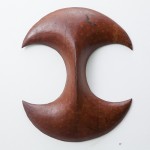
 Ottaman Women, 2013
Red Gum
Ottaman Women, 2013
Red Gum
1,500
_blank
-
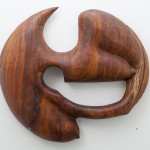
 Mother and Child, 2013
Blackwood
Mother and Child, 2013
Blackwood
$3,000
_blank
-
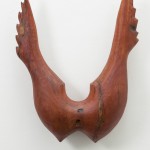
 Breasted Wings, 2013
Red Gum
Breasted Wings, 2013
Red Gum
$1,800
_blank
-
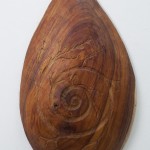
 Seed, 2013
Blackwood
Seed, 2013
Blackwood
1,800
_blank
-
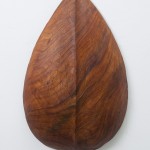
 A Breast, 2013
Blackwood
A Breast, 2013
Blackwood
$1,800
_blank
-
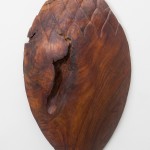
 A Breast, 2013
Blackwood
A Breast, 2013
Blackwood
$1,800
_blank
-
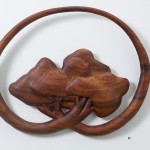
 The Nature of Holding, 2013
Blackwood
The Nature of Holding, 2013
Blackwood
$2,500
_blank
-
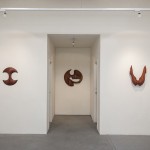
 _blank
_blank
-
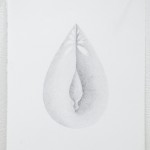
 _blank
_blank
-

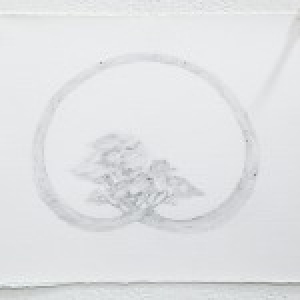 _blank
_blank
-
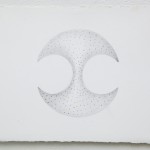
 _blank
_blank
-
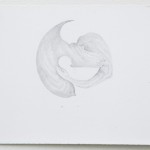
 _blank
_blank
-
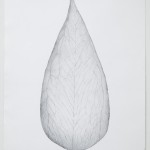
 _blank
_blank
-
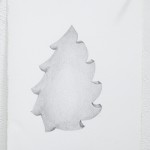
 _blank
_blank
-
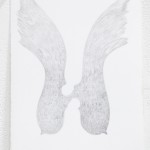
 _blank
_blank
-
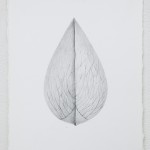
 _blank
_blank
-
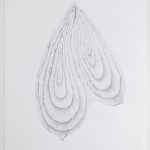
 _blank
_blank
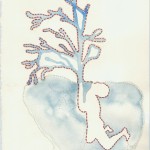
These drawings are associated with the sensation of water and by using watercolour a direct experience of its fluidity translates into the image and becomes a metaphor.
Each drawing is discovered rather than projected and in this manner the weightless space that is created is intuitive. A narrative of contradictions and distorted possibilities begin to form.
The objects and element are from a personal vocabulary of images that I have carried from past artworks and the introduction of new elements comes from using colour symbolically.
-
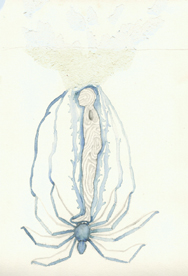
 A Visit from fear
Warercolour and graphite ©
A Visit from fear
Warercolour and graphite ©
195mm x 283mm
_blank
-
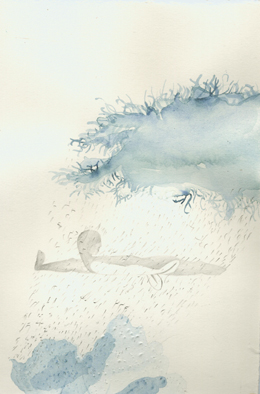
 Between Clouds
Warercolour and graphite ©
Between Clouds
Warercolour and graphite ©
195mm x 283mm
_blank
-
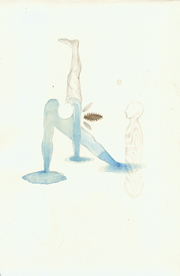
 Between My Sexes
Warercolour, graphite, thread and collage ©
Between My Sexes
Warercolour, graphite, thread and collage ©
195mm x 283mm
_blank
-
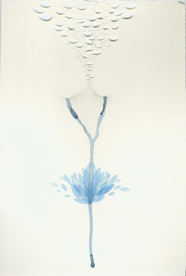
 Blue
Warercolour, graphite, thread and collage ©
Blue
Warercolour, graphite, thread and collage ©
195mm x 283mm
_blank
-
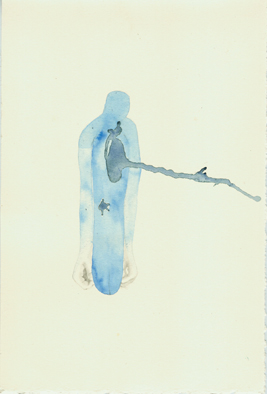
 Forlorn Heart
Warercolour ©
Forlorn Heart
Warercolour ©
195mm x 283mm
_blank
-
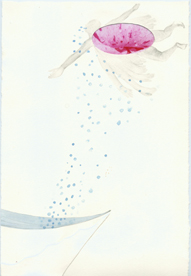
 Flying High
Warercolour, graphite, thread and collage ©
Flying High
Warercolour, graphite, thread and collage ©
195mm x 283mm
SOLD
_blank
-
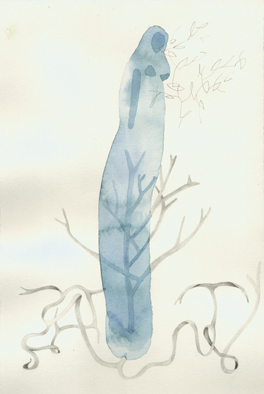
 Fungus Queen
Warercolour and graphite ©
Fungus Queen
Warercolour and graphite ©
195mm x 283mm
_blank
-
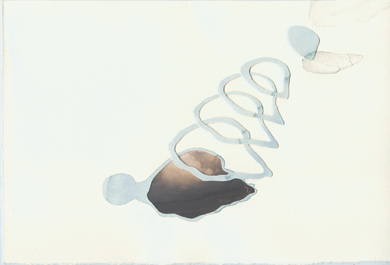
 Heart Dreaming
Warercolour, graphite and collage ©
Heart Dreaming
Warercolour, graphite and collage ©
195mm x 283mm
_blank
-
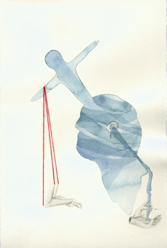
 Hung Blind By the Mind
Warercolour, graphite, thread and collage ©
Hung Blind By the Mind
Warercolour, graphite, thread and collage ©
195mm x 283mm
SOLD
_blank
-
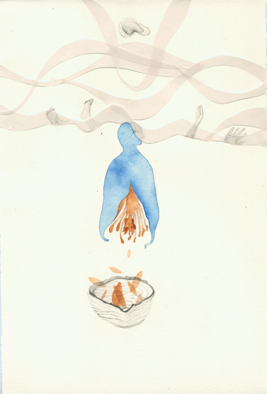
 Internal Merging
Warercolour, graphite and collage ©
Internal Merging
Warercolour, graphite and collage ©
195mm x 283mm
_blank
-
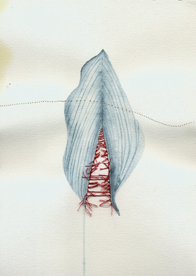
 Leaf Repair
Warercolour and thread ©
Leaf Repair
Warercolour and thread ©
195mm x 283mm
_blank
-
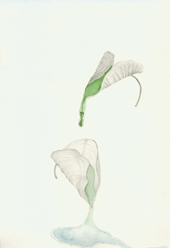
 Transferring Leave
Warercolour and graphite ©
Transferring Leave
Warercolour and graphite ©
195mm x 283mm
_blank
-
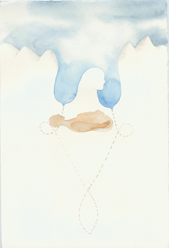
 Mother Nuture
Warercolour and graphite ©
Mother Nuture
Warercolour and graphite ©
195mm x 283mm
_blank
-
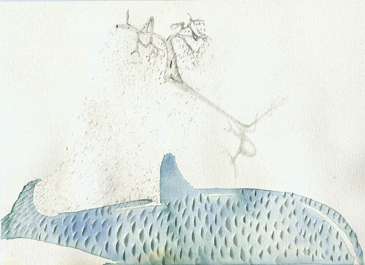
 Mammal Weather
Warercolour, graphite and collage ©
Mammal Weather
Warercolour, graphite and collage ©
195mm x 283mm
_blank
-
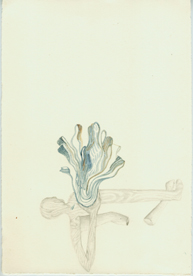
 My One Legged Friend
Warercolour and graphite ©
My One Legged Friend
Warercolour and graphite ©
195mm x 283mm
_blank
-
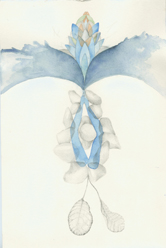
 Parting the Way
Warercolour and graphite ©
Parting the Way
Warercolour and graphite ©
195mm x 283mm
SOLD
_blank
-
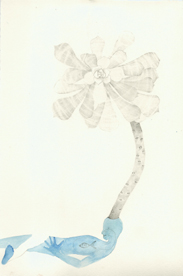
 Pure Thought
Warercolour and graphite ©
Pure Thought
Warercolour and graphite ©
195mm x 283mm
_blank
-
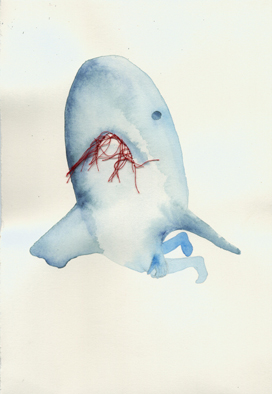
 Shark Wisdom
Warercolour, graphite and thread ©
Shark Wisdom
Warercolour, graphite and thread ©
195mm x 283mm
SOLD
_blank
-
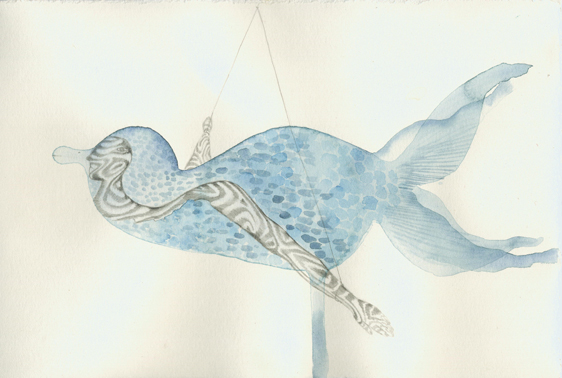
 Super Hero
Warercolour and graphite ©
Super Hero
Warercolour and graphite ©
195mm x 283mm
_blank
-
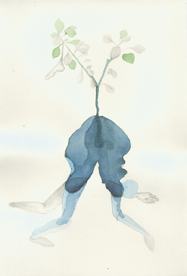
 Transported By Nature
Warercolour and graphite ©
Transported By Nature
Warercolour and graphite ©
195mm x 283mm
SOLD
_blank
-
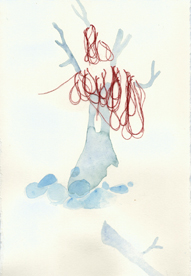
 Wisdom Tree
Warercolour, graphite and thread ©
Wisdom Tree
Warercolour, graphite and thread ©
195mm x 283mm
_blank
-
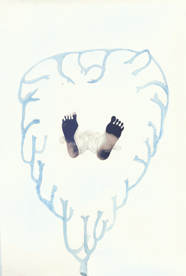
 Walking on Water
Warercolour, graphite and collage ©
Walking on Water
Warercolour, graphite and collage ©
195mm x 283mm
_blank
-
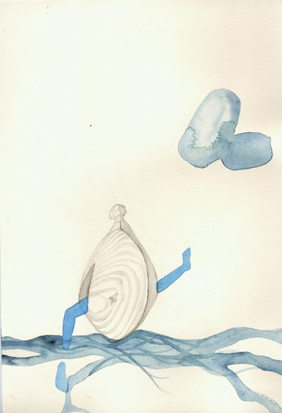
 We Both Navigate
Warercolour and graphite ©
We Both Navigate
Warercolour and graphite ©
195mm x 283mm
_blank
-
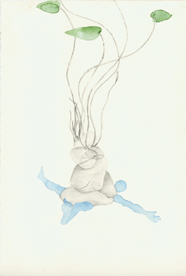
 Weighted Fall
Warercolour and graphite ©
Weighted Fall
Warercolour and graphite ©
195mm x 283mm
SOLD
_blank

This body of work explores the concept of the known and of the solid in a period of social, economic and environmental uncertainty. These works look to explore the inner reality of being as a solid and an accountable experience. Here the inner and outer meet in the world of solid forms, a step into the world of recognizable matter.
Red is the colour of flesh and the forms – sometimes symbolic, sometimes graphic – show the contemplation of the interconnectedness of things; of sexuality and nature, of the cerebral and the earthly, of solidity and the ephemeral. This is a blurring of flesh and plant. The red blanket we associate with earthly comfort, warmth and security and red – blood, or the body.
The womb and phallice , suspended in space and at times in abstract relationship, are reminiscent of pagan symbology and have elements of the iconic and ornate. Placed dramatically in the midst of empty space, they are at once cerebral (unearthed) and yet refer to the actuality of physical ecstasy and the burgeoning of life above ground and under water.
Symmetry and asymmetry co-exist and suspended animation freezes the passing moment for the purpose of contemplation and a sense of the known. Human forms are contorted and dwarfed but inseparable from forces of natural growth. We have a place here,but are reminded of our size in relation to the power of natural forces in us and beyond us.
The feminine and masculine forces and strengths reside within us waiting to be awakening and partnered to fulfill the natural process of creativity. The uniformity of the red blanket used to create the artworks enable the images to be read as silhouettes; a projection which allows the relationship of forms to become the focus of tension. In the world of objects, duality is an inescapable truth. Here the iconic forms become the objects with definite boundaries that are in relationship with the interchangeable positive and negative space.
The comfort of being solid alludes to the satisfaction and the acceptance of the physical body and self as part of a whole. It is the comfort of bringing opposing or fragmented aspects together to site alongside one another willingly. It is the acceptance of all aspects of self.
Virgona’s artistic enquiry explores the dynamics of the inner world, articulating in a visual language the unseen elements that affect and surround our experience.
– Kate Butler
-
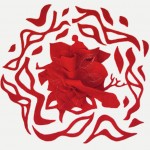
 Radiating Growth
Woollen Blanket on paper
Radiating Growth
Woollen Blanket on paper
550x770mm Unframed
$ 620
_blank
-
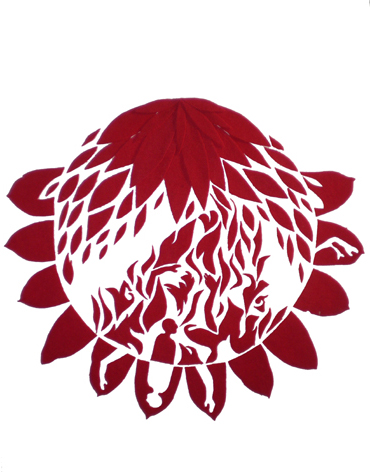
 Core Consumption
Woollen Blanket on paper
Core Consumption
Woollen Blanket on paper
550x770mm Unframed
$ 620
_blank
-
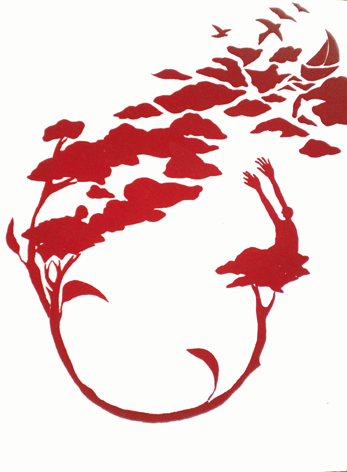
 Drifting Weight
Woollen Blanket on paper
Drifting Weight
Woollen Blanket on paper
550x770mm Unframed
$ 620
SOLD
_blank
-
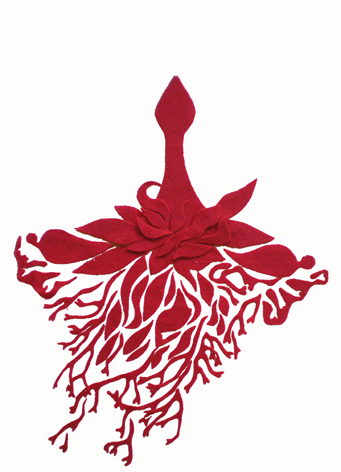
 Growing Comfort
Woollen Blanket on paper
Growing Comfort
Woollen Blanket on paper
550x770mm Unframed
$ 620
SOLD
_blank
-
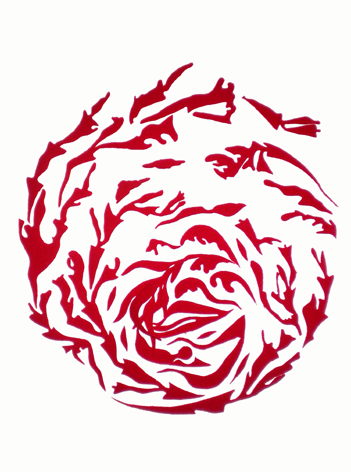
 Healing Currents
Woollen Blanket on paper
Healing Currents
Woollen Blanket on paper
550x770mm Unframed
$ 620
SOLD
_blank
-
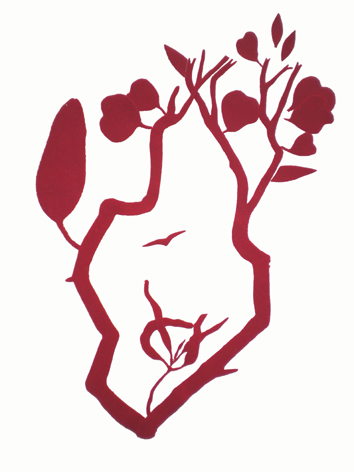
 Paths of Comfort
Woollen Blanket on paper
Paths of Comfort
Woollen Blanket on paper
550x770mm Unframed
$ 620
SOLD
_blank
-
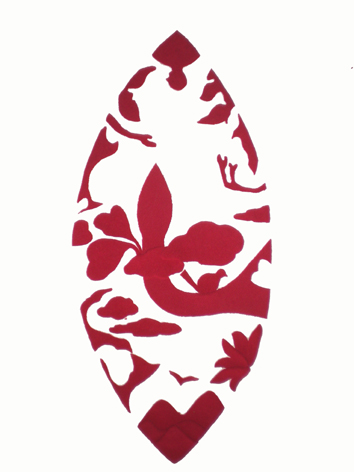
 Postive Space
Postive Space
Postive Space
Postive Space
Woollen Blanket on paper
550x770mm Unframed
$ 620
SOLD
_blank
-
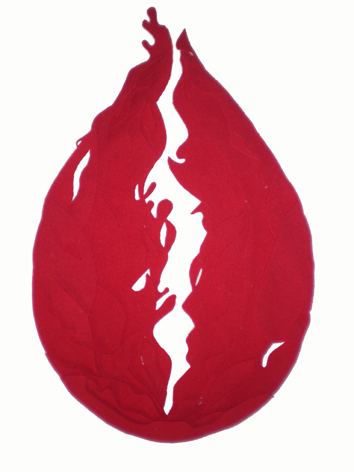
 Solid Flow
Woollen Blanket on paper
Solid Flow
Woollen Blanket on paper
550x770mm Unframed
$ 620
_blank
-
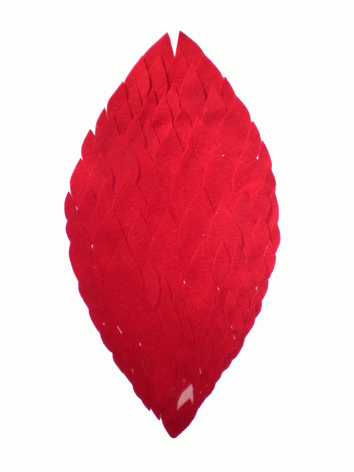
 Solid
Woollen Blanket on paper
Solid
Woollen Blanket on paper
550x770mm Unframed
$ 620
_blank
-
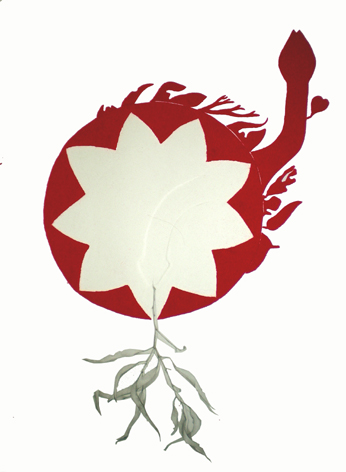
 Sun Seed
Woollen Blanket & graphite on paper & embossing
Sun Seed
Woollen Blanket & graphite on paper & embossing
550x770mm Unframed
$ 620
_blank
-
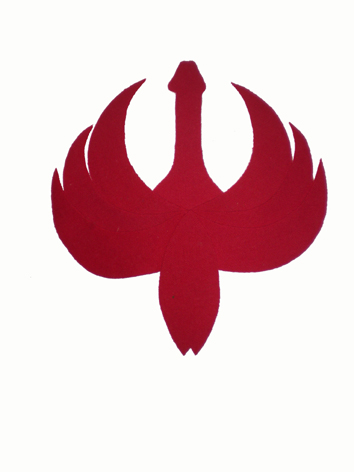
 Chalice
Woollen Blanket on paper
Chalice
Woollen Blanket on paper
550x770mm Unframed
$ 620
_blank
-
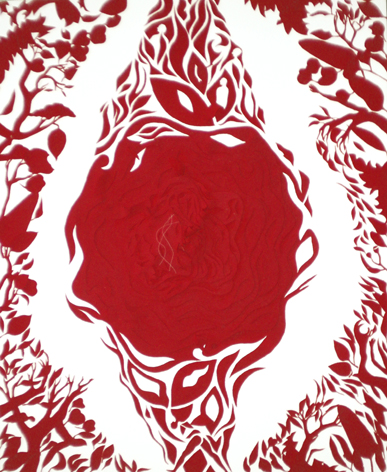
 The Eye of Heaven
Woollen Blanket on paper
The Eye of Heaven
Woollen Blanket on paper
1105x1370mm Unframed
$ 1,785
_blank
-
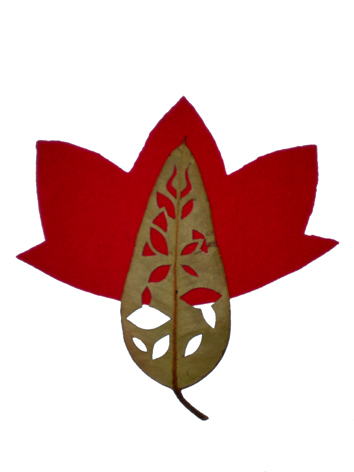
 Healing Leaves No.5
Woollen Blanket & grey gum leaves collage on paper
Healing Leaves No.5
Woollen Blanket & grey gum leaves collage on paper
355x455mm Framed
$ 275
_blank
-
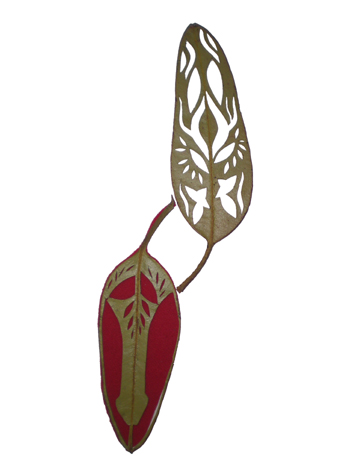
 Healing Leaves No.2
Woollen Blanket & grey gum leaves collage on paper
Healing Leaves No.2
Woollen Blanket & grey gum leaves collage on paper
355x455mm Framed
$ 275
SOLD
_blank
-
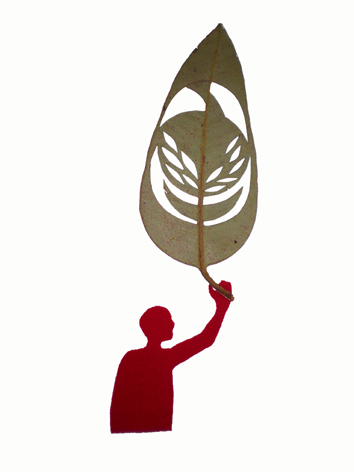
 Healing Leaves No.3
Woollen Blanket & grey gum leaves collage on paper
Healing Leaves No.3
Woollen Blanket & grey gum leaves collage on paper
355x455mm Framed
$ 275
SOLD
_blank
-
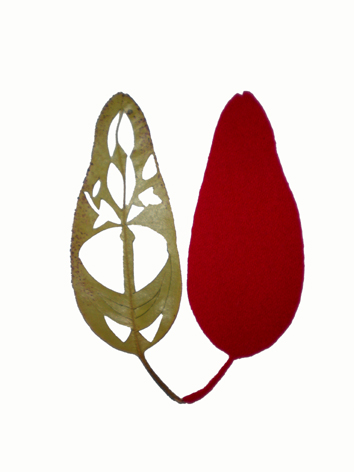
 Healing Leaves No.6
Woollen Blanket & grey gum leaves collage on paper
Healing Leaves No.6
Woollen Blanket & grey gum leaves collage on paper
355x455mm Framed
$ 275
SOLD
_blank
-
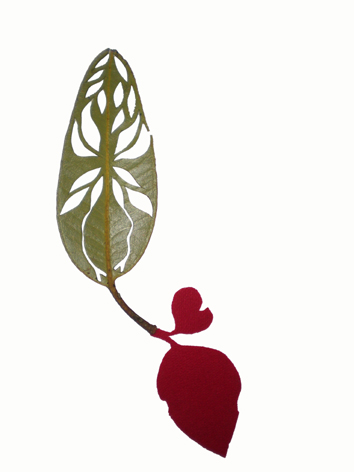
 Healing Leaves No.4
Woollen Blanket & grey gum leaves collage on paper
Healing Leaves No.4
Woollen Blanket & grey gum leaves collage on paper
355x455mm Framed
$ 275
_blank
-
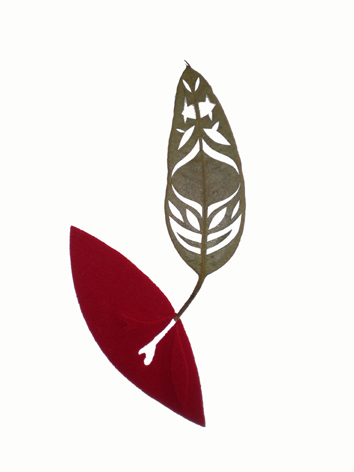
 Healing Leaves No.7
Woollen Blanket & grey gum leaves collage on paper
Healing Leaves No.7
Woollen Blanket & grey gum leaves collage on paper
355x455mm Framed
$ 275
SOLD
_blank
-
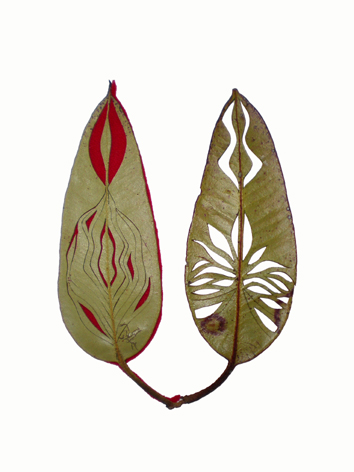
 Healing Leaves No.1
Woollen Blanket & grey gum leaves collage on paper
Healing Leaves No.1
Woollen Blanket & grey gum leaves collage on paper
355x455mm Framed
$ 275
SOLD
_blank
-
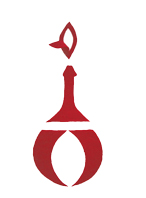
 _blank
_blank
-
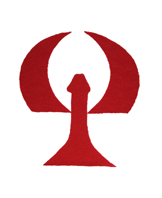
 _blank
_blank
-
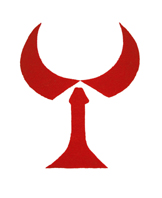
 _blank
_blank




































